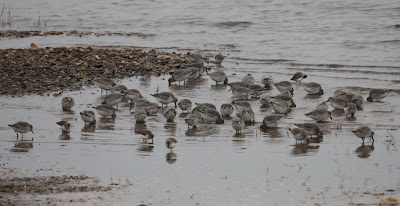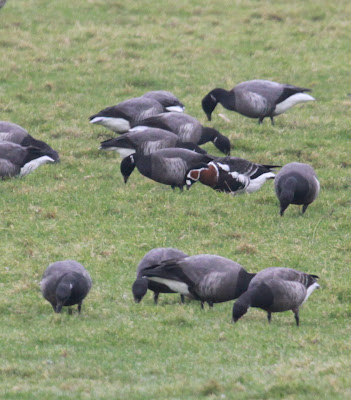The weather forecast had predicted rain, and cor blimey were they right. Setting out close to 05:00 it had already been at it for a few hours and at that time it could be described as moderate. The early start was as much about getting a clear road as anything, but it seemed everyone had the same idea and the traffic was heavy for that time of day. By the time I reached Honiton in Devonshire the sleet had replaced the rain
and things were little better when reaching the Tamar Bridge crossing into Cornwall. First place to be visited went under the name of Dozmary Pool, and though I found signposts for direction they were little help as they were not consistent.
Reaching the tiny village of St Neot with it oversize and imposing church I knew at least this was the right track
and stopping to take this supposed rather picturesque photograph I nearly drowned in the process. The weather was not getting any better.
Finally with a little help from passers-by I reached Dozmary Pool
 and started my search for a
and started my search for a Lesser Scaup.
Lesser Scaup.With only 10 Ducks on this smallish lake the task wasn't that difficult,
 the problem being everything was so far away.
the problem being everything was so far away.There were however 2 things in favour here, one being all observations could be made from the car, and two at least the bird wasn't on neighbouring Colliford Lake that is a couple of hundred times bigger.
To illustrate this first Year Tick of the day a better image taken in British Columbia, Canada has been taken from the archive.
Passing through the administrative city of Cornwall, this is all that could be seen of Truro Cathedral but at closer quarters it is a magnificent example of what may be described as one of Great Britain's more modern high churches.
Penrose House, just 1.5 miles south of Helston, is built on the side of my next port of call,
 and is now in the hands of the National Trust.
and is now in the hands of the National Trust.Loe Pool is the largest natural lake in the whole of Cornwall, and for some days now it has been supporting another 'rare' Duck from the Americas,
a Bufflehead which today was far too distant to photograph (thank Keith from In Focus, for the Mighty Midget 'scope)
but these pictures give some idea of what the bird looked like, all except for the adult male on the right of the lower image.
is famous for an emblematic bird that only exists in a few places in the UK, and entailing just a 12 miles drive, worth every minute.
The Lizard Lighthouse, I have used this light as a bearing during my sea-going career on many, many occasions,
but The Lizards most noted claim to fame is that it is the Most Southerly Point of Mainland Great Britain.
Looking round the sweep of Lizard Bay. In my search I found one of these enigmatic bird on these rocks below me, but it was soon gone. Never fear, as behind me there was the 'call' of at least another one which were soon located in the next field.
The Chough (pronounced Chuff in English) is name after a miss-spelling of the sound they make,
and is one of the finest examples of the Crow Family.
Endangered for many years, there is now a programme of protection that seemingly is doing very well, but this fragile species needs
a specialist diet found only on the short cropped grass of these sea cliffs.
As far as the county of Cornwall is concerned this is the most important of birds, featuring on many of its Coats of Arms.
A great day, despite the weather which continued until I got home, adding a further 3 species to the Year List.
A great day, despite the weather which continued until I got home, adding a further 3 species to the Year List.
The Year (January) List now stands at 199
but there should be no talk of final hurdles etc. There is a plan for tomorrow with the prospect of 4 or 5 new additions, but one will be difficult enough!
but there should be no talk of final hurdles etc. There is a plan for tomorrow with the prospect of 4 or 5 new additions, but one will be difficult enough!



















































